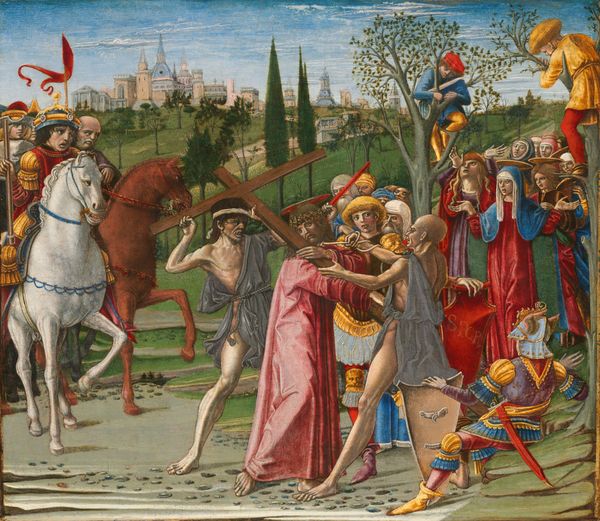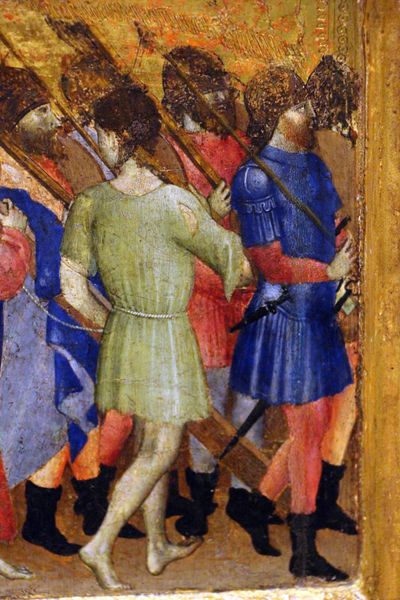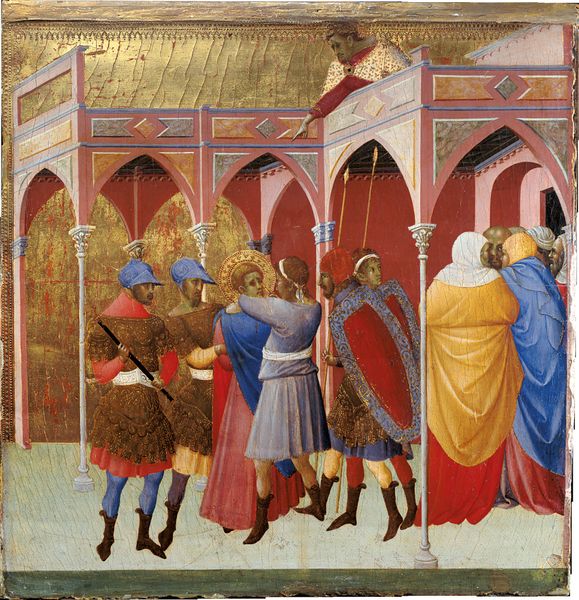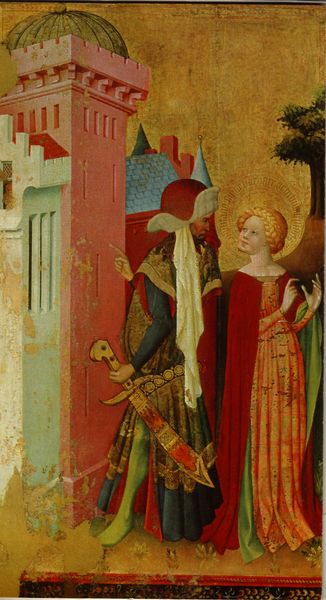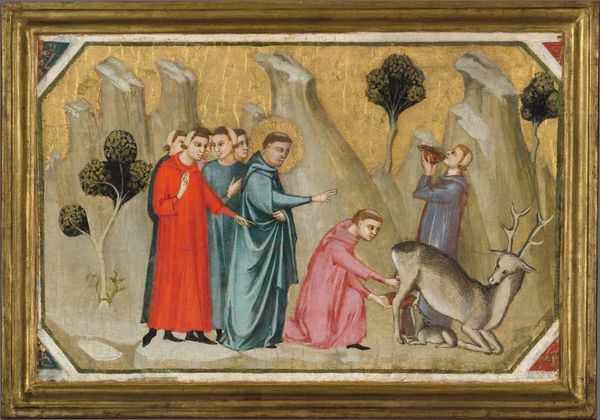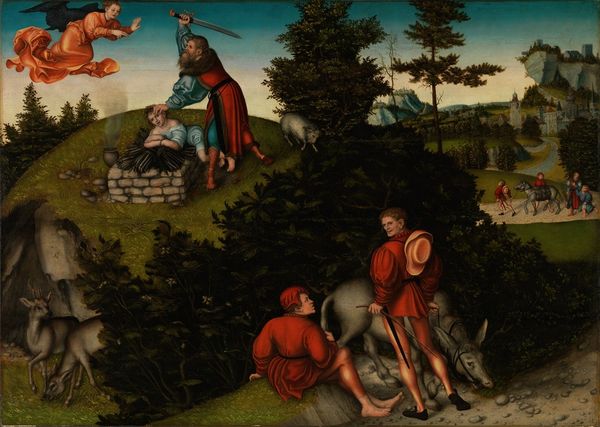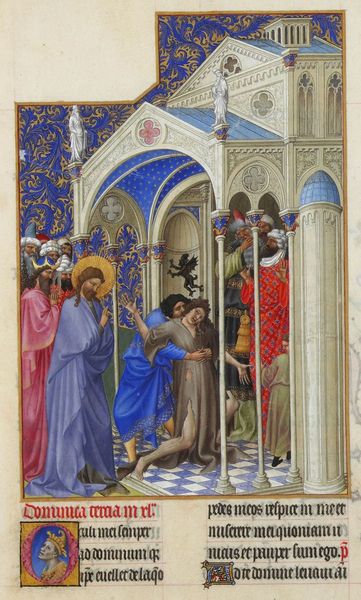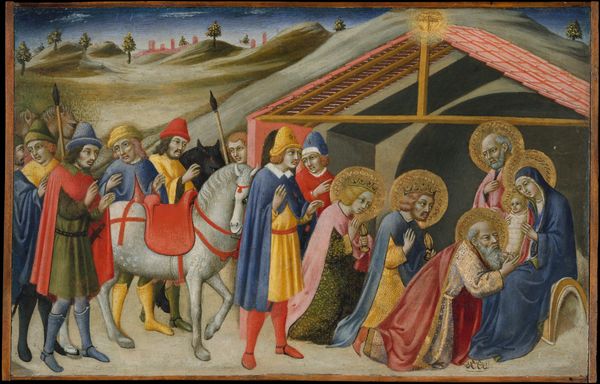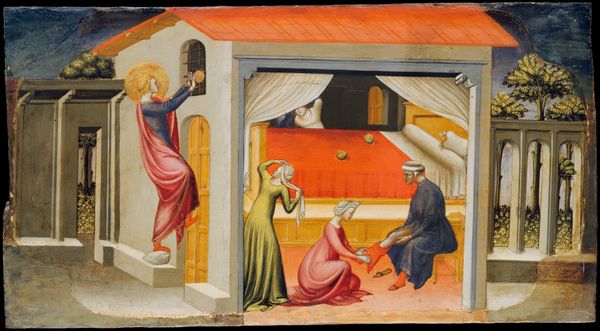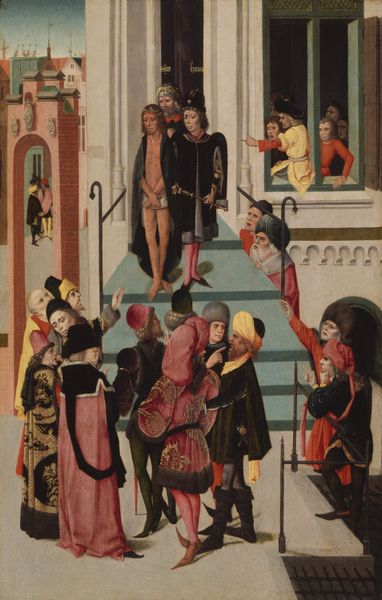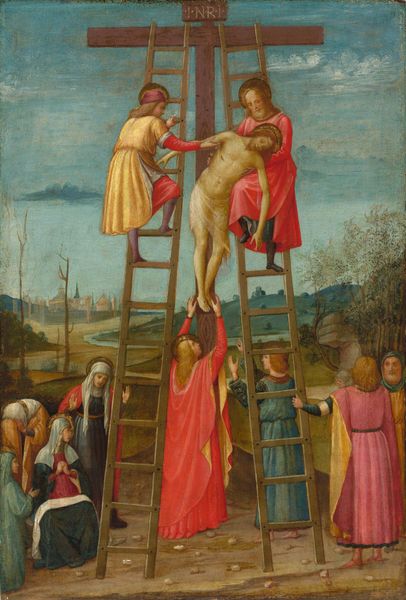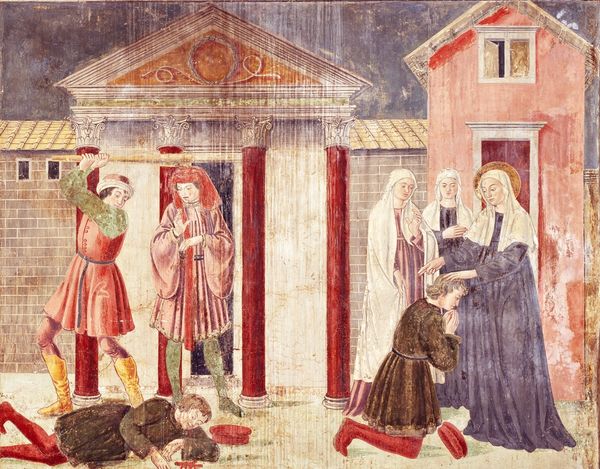
tempera, painting, gouache
#
gouache
#
narrative-art
#
tempera
#
painting
#
gouache
#
figuration
#
coloured pencil
#
history-painting
#
italian-renaissance
Dimensions: height 22 cm, width 48 cm
Copyright: Rijks Museum: Open Domain
Zanobi di Jacopo Machiavelli painted "Saint Nicholas of Tolentino Saving a Hanged Man" in the 15th century using tempera on wood. Tempera is a meticulous process. The artist grinds pure pigment into egg yolk, which acts as a binder, holding the color. This mixture is then carefully applied in thin, translucent layers. The quick-drying nature of tempera demands precision and careful planning, but allows for incredible detail, as you can see in the expressions and garments of the figures. The choice of tempera, a traditional medium at the time, imbues the artwork with cultural significance. Its association with religious painting links this work to a longer history of devotion and skilled artistry. The amount of work involved in creating the painting with tempera highlights the value placed on craftsmanship and artistic skill in the 15th century. Here, materials, making, and historical context merge, challenging the traditional divide between craft and fine art.
Comments
rijksmuseum about 2 years ago
⋮
Saint Nicholas was renowned for his charitable deeds in the central Italian town of Tolentino. He is here shown in the robes of an Augustinian friar, performing one of the many posthumous miracles that led to his canonisation in 1446. This small panel formed part of an altarpiece in the church of Santo Spirito, Florence, in which town Zanobi Machiavelli principally worked.
Join the conversation
Join millions of artists and users on Artera today and experience the ultimate creative platform.
